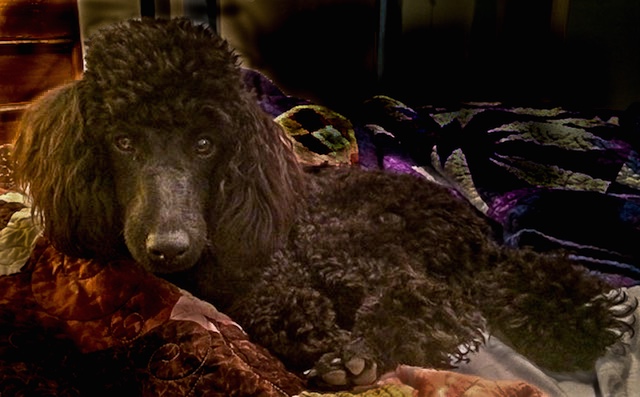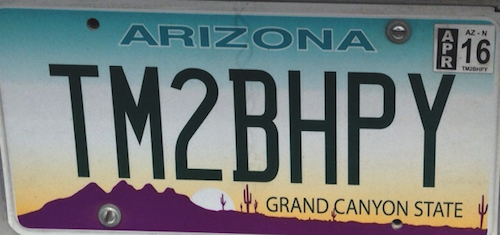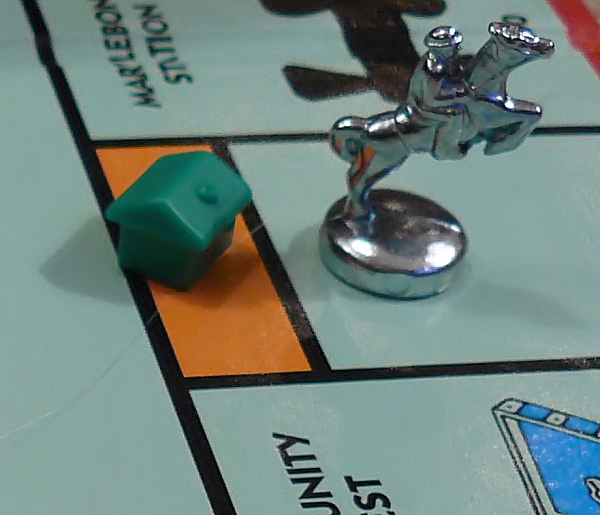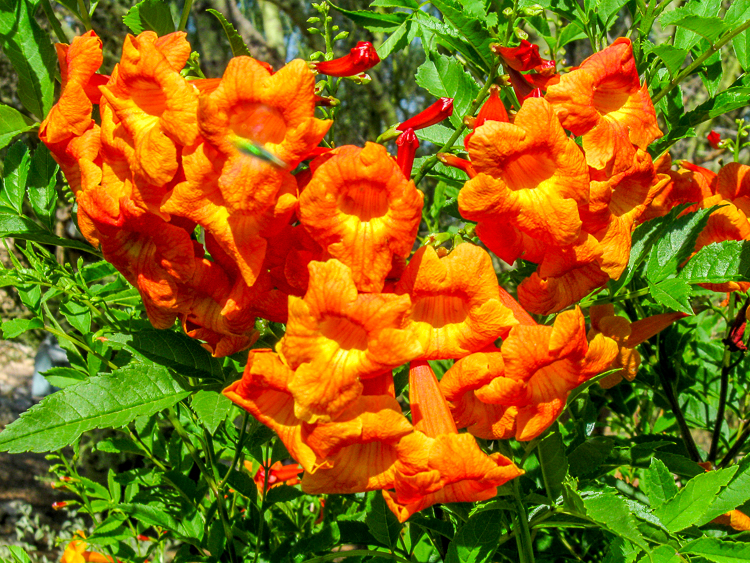This spring/summer has been an unusual one for our desert garden especially our front landscape. We have a good number of agaves in our front yard. Agaves are sharp-leaved plants that need little water so they do very well in arid places and the Sonoran desert is no exception.
Once in their lifetime agaves send out a flower stalk which we refer to as a spike. The spike flowers and then produces bulbils (plantlets) or seeds. Once the process is complete, the mother plant dies. Before the plant dies, however, it generally produces other plants which are called pups.
We moved into our home and several agaves were already in place and then we added additional species. Each agave species or type flowers according to their own timetable and if you were planting a bunch of agaves from the same species, you would want to purchase them at different stages of growth so they don’t all spike at once and end up dying at the same time.
Here is what our landscape looks like now…

Can you see all the spikes? Just in case you can’t see them all, here they are numbered…
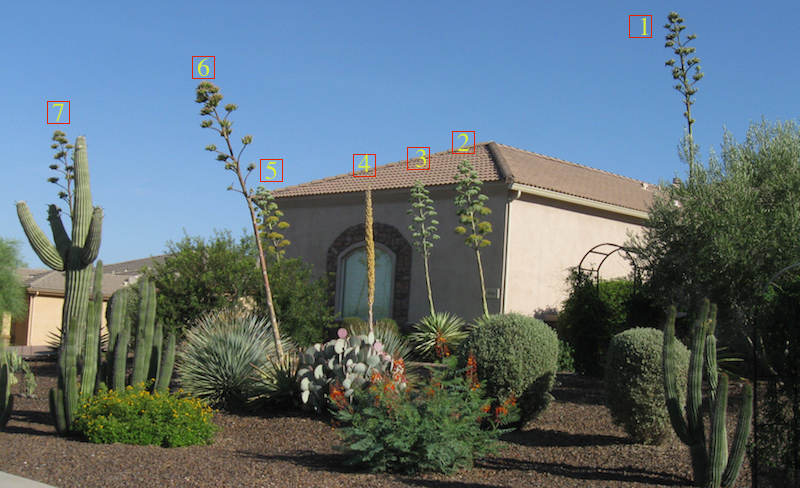
Yes we have seven spikes all at the same time. As I indicated above, these are not all the same type of agave and it just worked out that they spiked together.
We have one additional twist to the story. Among the agaves is a sotol (Dasylirion wheeleri) , or desert spoon (#4). They also send out a spike. One of the main differences is that the sotols don’t die after producing their spike. They continue with their life cycle. You can see that it looks quite different from the others. While we have at least three sotols, only one has sent out a spike this season.
Here is a close up of the one section and the sotol is a bit more noticeable (right of center).
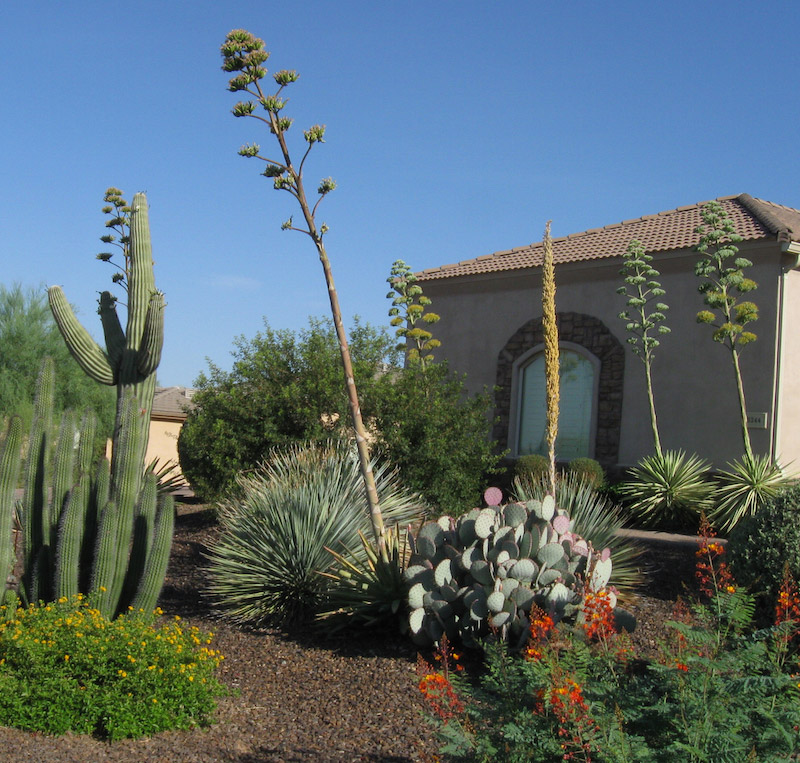
We found this random occurrence unusual and it makes our landscape look a bit otherworldly with all those spikes in the air. What are your thoughts?
Read More:
Agaves
Arizona Municipal Water Users Association/a> – Click on a variety to see more detail
Here is a picture of a variegated agave ( Agave weberi ‘Arizona Star’) which adds an additional interest to the landscape
Sotol (desert spoon)

